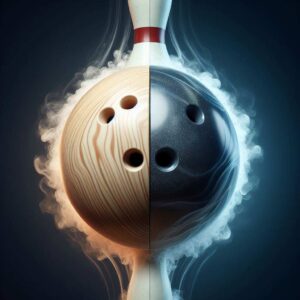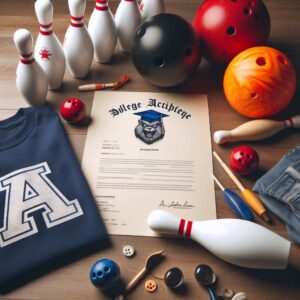Bowling is a beloved pastime enjoyed by people of all ages and skill levels. Whether you’re a seasoned pro or a newcomer to the lanes, having the right bowling ball throwing technique can make all the difference in your game.
In this comprehensive guide, we’ll explore the key elements that go into achieving the perfect bowling ball throw, helping you take your bowling skills to the next level.
Choosing the Proper Bowling Ball
The foundation of a great bowling throw starts with selecting the right bowling ball. The weight, size, and material of the ball can significantly impact your accuracy, power, and overall performance on the lanes.
When it comes to choosing the right bowling ball, the first and most crucial factor to consider is the weight. Selecting a ball that is too heavy for your strength and physical capabilities can lead to control issues, inconsistent releases, and potential injuries. On the other hand, a ball that is too light may not provide the necessary power and stability for an effective throw.
As a general rule, the ball’s weight should not exceed 10% of your body weight. For example, if you weigh 150 pounds, a 15-pound bowling ball would be an appropriate choice. However, it’s essential to consider your individual strength, experience, and personal preference when determining the ideal ball weight.
Beyond weight, the ball’s size and material also play a vital role. Bowlers with smaller hands may benefit from a ball with a slightly smaller diameter, while those with larger hands may prefer a ball with a more substantial grip. Additionally, the ball’s core and cover stock can significantly impact its performance characteristics, such as hook potential, ball reaction, and overall control.
When selecting a bowling ball, it’s highly recommended to consult with a professional at your local bowling alley or pro shop. They can guide you through the selection process, measure your hand size, and recommend the best ball options based on your skill level, physical attributes, and personal preferences.
Developing the Correct Bowling Stance
Establishing the proper bowling stance is crucial for maintaining balance, control, and consistency throughout your throw. Let’s explore the key elements of a well-executed bowling stance:
- Foot Positioning: Your feet should be shoulder-width apart, with your dominant foot slightly ahead of your non-dominant foot. This stance provides a stable base and allows for a smooth and balanced approach.
- Weight Distribution: Evenly distribute your weight on the balls of your feet, with a slight lean forward from the ankles. Avoid putting too much weight on your heels, as this can compromise your balance and stability.
- Knee Alignment: Keep your knees slightly bent and aligned directly over your toes. This posture helps maintain a lowered center of gravity, enhancing your overall balance and control.
- Shoulder Alignment: Your shoulders should be square to the target, with your dominant shoulder slightly ahead of your non-dominant shoulder. This positioning helps facilitate a smooth and consistent ball release.
- Arm and Wrist Position: Hold the bowling ball with a firm but relaxed grip, keeping your arm and wrist in a straight, vertical line. Avoid excessive wrist breakage or flicking, as this can negatively impact the ball’s trajectory and consistency.
Remember, developing the correct bowling stance is a process that requires practice and refinement. Experiment with different foot placements, weight distributions, and arm positions to find the setup that feels most natural and comfortable for you.
Mastering the Bowling Ball Approach
The bowling ball approach is a critical component of a successful throw, as it sets the stage for a smooth and controlled release. Let’s dive into the key steps of the bowling ball approach:
- The Walking Approach: Begin by standing behind the foul line, with your dominant foot slightly ahead of your non-dominant foot. Take four or five deliberate steps forward, maintaining a consistent rhythm and pace.
- The Stepping Approach: As you reach the foul line, take a final step forward with your non-dominant foot, keeping your weight evenly distributed. This step should be slightly shorter than your previous steps, allowing you to transition smoothly into the release.
- The Ball Release: As your non-dominant foot touches the lane, begin your ball release. Extend your arm forward, keeping your wrist straight and your elbow high. Release the ball at the point where your arm is fully extended, ensuring a smooth and controlled release.
- Timing and Rhythm: The key to a successful approach is maintaining a consistent rhythm and timing. Develop a cadence that feels natural and comfortable, and strive to replicate it with each throw. Avoid rushing or hesitating, as this can disrupt your balance and lead to inconsistent releases.
It’s important to note that the specific number of steps in your approach may vary depending on your personal preference and physical capabilities.
Some bowlers may prefer a four-step approach, while others may find a five-step approach more comfortable. Experiment with different approaches and find the one that works best for you.
Generating Power and Accuracy
Mastering the art of generating power and accuracy in your bowling throw is the final piece of the puzzle. By harnessing your body’s momentum and optimizing your ball release, you can achieve consistent and high-performance throws.
- Leveraging Body Momentum: Your body’s momentum is a crucial source of power in your bowling throw. As you approach the foul line, focus on transferring your weight from your back foot to your front foot, allowing your body’s natural momentum to propel the ball forward.
- Grip and Wrist Position: Maintain a firm but relaxed grip on the bowling ball, with your wrist positioned in a straight, vertical line. Avoid excessive wrist breakage or flicking, as this can negatively impact the ball’s trajectory and consistency.
- Ball Rotation and Hook: The desired ball rotation and hook can greatly influence the ball’s path and overall performance. Experiment with different hand positions and release techniques to find the optimal ball motion that suits your style and the lane conditions.
- Tracking and Analyzing: Regularly monitor and analyze your bowling performance to identify areas for improvement. Keep a record of your throws, including ball speed, hook rate, and pin carry, and use this data to refine your technique and strategy.
Practice Drills and Techniques
Consistent practice is the key to mastering the perfect bowling ball throw. Incorporate the following drills and techniques into your training regimen to improve your skills and achieve better results on the lanes:
- Warm-Up Exercises: Begin your practice sessions with dynamic warm-up exercises that target your core, shoulders, and wrist flexibility. These exercises help prepare your body for the physical demands of bowling and reduce the risk of injury.
- Targeting Specific Mechanics: Dedicate time to practicing specific aspects of your bowling technique, such as your stance, approach, and release. Break down your throw into smaller, manageable components and work on refining each one individually.
- Spot Bowling: Set up a series of targets or spots on the lane and practice throwing your ball to hit these specific targets. This exercise helps develop your accuracy and consistency in ball placement.
- Repetition and Consistency: Consistent practice is the foundation of any successful bowling technique. Aim to bowl regularly, focusing on maintaining a consistent approach and release with each throw.
By incorporating these practice drills and techniques into your routine, you’ll steadily improve your bowling skills, develop muscle memory, and achieve greater consistency and performance on the lanes.
Conclusion
Mastering the perfect bowling ball throw is a journey, but by understanding and applying the key elements outlined in this guide, you’ll be well on your way to becoming a more skilled and confident bowler.
Remember to choose the right bowling ball, develop a solid and balanced stance, perfect your approach and release, and consistently practice to refine your technique.
With dedication and patience, you’ll be able to generate more power, accuracy, and control in your throws, ultimately leading to higher scores and greater enjoyment on the lanes.
So, grab your bowling ball, head to your local alley, and put these insights into practice. Embrace the process, celebrate your progress, and most importantly, have fun on your journey to bowling mastery.





